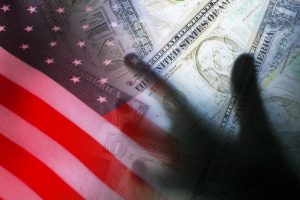The Economist Warns ‘A Reckoning Looms’ for America’s Debt-Binged Companies
The comments above & below is an edited and abridged synopsis of an article by The Economist
Companies in the US have been growing at a record pace, yet many have binged on debt. Markets have been untroubled because the good times have coincided with a period of record-low interest rates, but a shock could put corporate America in trouble.
 The debt load is worrying. When calculated as a percentage of GDP, the total debt of non-financial corporations reached 73.3% in the 2nd quarter of 2017, a record high. Measured against EBITDA, the net debt of non-financial companies in the S&P500 hit 1.5 at year-end 2016, a level not seen since 2003. It remained nearly as high in 2017.
The debt load is worrying. When calculated as a percentage of GDP, the total debt of non-financial corporations reached 73.3% in the 2nd quarter of 2017, a record high. Measured against EBITDA, the net debt of non-financial companies in the S&P500 hit 1.5 at year-end 2016, a level not seen since 2003. It remained nearly as high in 2017.
Things are less worrying than before the financial crisis. Debt is now more evenly distributed. Only 27% of US firms in 2017 were highly levered, down from 42% of firms in 2007.
The use of the extra debt was also somewhat different; much of it was used to finance share buy-backs, essentially for purposes of balance-sheet management (rather than, say, big expansions or acquisitions).
Still, certain industries look vulnerable under their debt loads. Retail is the sector most at risk. Around 50 retailers filed for bankruptcy in 2017, many due to the debt piled on by their private-equity owners. The most prominent example is Toys ‘R’ Us.
Energy and utilities are also at risk from indebtedness, and America’s new tax reforms add complications.
How quickly debt levels turn into a problem depends on monetary policy and how the economy fares. In a benign scenario, in which corporate earnings rise across the board, and the Federal Reserve raises interest rates at a slow and predictable pace, companies’ debt ratios may fall.
But if more worrying scenarios—a trade war, or faster-than-expected monetary tightening—come to pass, more indebted companies may find their luck running out. A binge never lasts forever.
